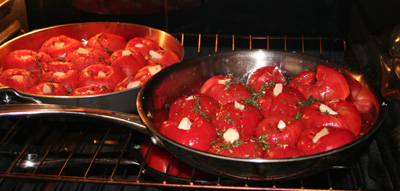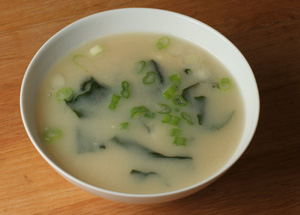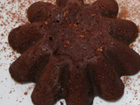Adding Flavor by using Umami rich foods
FLAVOR BOOSTING TIPS
Making use of Natural Umami Flavors
In English, it is sometimes described as "meaty" or "savoury". In the Japanese, the term umami is used for this taste sensation, whose characters literally mean "delicious flavour." Umami is now the commonly used term by taste scientists for the fifth taste (the first four being salt, sweet, bitter and sour).
Umami taste?is imparted in foods by the free amino acids (of which glutamate is the most plentiful in nature). In humans, however, just two amino `nosodium glutamate (MSG) and aspartate evoke the umami response.A striking feature of umami taste in humans is their potentiation by purine nucleotides (such as IMP and GMP) which also have an umami flavor of their own.?
Umami doesn't have a pleasant taste alone, but makes the taste of foods more pleasant.
Free glutamate, which results when glutamate is released during the breakdown of a protein molecule, occurs naturally in many foods, such as meat, milk, mushrooms, Parmesan cheese, and tomatoes. There are two forms of glutamate. Glutamate exists in the "bound" form as a part of protein, along with other amino acids. It can also be found in the "free" form in plant and animal tissues. It is free glutamate which plays a role in the palatability and acceptability of foods. Foods which contain high levels of free glutamate, such as cheese and ripe tomatoes, are often chosen for their distinctive and enjoyable flavors. There is no basis that at levels consumed naturally in foods free glutamate will pose a health risk (see full article).
High levels of free glutamate are found in dried seaweed , tomatoes , parmesan cheese, anchovies, fish sauce and mushrooms. Levels of free glutamate in parmesan cheese, a food with one of the highest levels of naturally occurring glutamate, contains about 1.3 grams of free glutamate per 100 grams. This is far less than what would be required to produce any adverse side effects (Note: some reports of side effects from MSG are at levels as low as 0.5 grams). Dried sea weed has a very high free glutamate value of 2240.0 mg/100g.
Working with the Umami Flavor
The glutamate taste sensation is most intense in combination with sodium. This is one reason why tomatoes exhibit a stronger taste after adding salt. It is a multidimensional taste sensation that is not only savory, brothy and mouth filling but actually interacts with the other taste receptors. Umami intensifies the taste of salt and sweet, and balances bitter and sour.
Less Salt and Sugar
While a small amount of sugar can be used to round out and softens flavors, especially cutting a bitter taste, salt will heighten flavors especially in the presence of umami flavors. In combination with umami flavors less salt is needed to boost the flavor. For more information about the science of taste -->See: about taste.
USING UMAMI BASED FOODS AS FLAVOR ENHANCERS
A bit of salt can go a long way not just in giving food a slightly salty taste but in actually enhancing it's other flavors. Adding just a few grains of salt to a fresh tomatoe brings out the natural umami?flavor that tomatoes has.
 Tomatoes are high in the free form of glutamate which provides a natural Umami flavor. Roasting tomatoes will further inensifies this flavor. Roasted tomatoes freeze well for the winter and are an excellent flavor booster for many dishes.
Tomatoes are high in the free form of glutamate which provides a natural Umami flavor. Roasting tomatoes will further inensifies this flavor. Roasted tomatoes freeze well for the winter and are an excellent flavor booster for many dishes.
 Pan roasting portabello mushrooms until browned to the point of being caramelized intensifies their rich umami flavor, Shiitake Mushrooms are also high in umami flavor.
Pan roasting portabello mushrooms until browned to the point of being caramelized intensifies their rich umami flavor, Shiitake Mushrooms are also high in umami flavor.
Read about the Health Benefits of Shiitake Mushrooms
 Miso soup uses a basic stock made kombu (kelp) which is high in glutamate.
Miso soup uses a basic stock made kombu (kelp) which is high in glutamate.
Umami was first identified by Professor Kikunae Ikeda at the Tokyo Imperial University. He found that glutamic acid was responsible for the palatability of the broth from konbu seaweed and named it umami.
Image from Greenmarket Recipes
Umami flavors intensifies sweet and salt tastes and therefore less salt is needed in your recipe. Using the finest quality Parmesans or other aged cheeses has a more intense umami flavor—so you can use less in a particular recipe.
MORE ON ENHANCING FLAVORS:
What is the Maillard Reaction?
Making use of the Maillard Reaction by browning foods
References:
Umami - Taste Receptor, Tactile Sensation and Flavor Intensifier
Savoring the flavors -- Chicago area chefs and sommeliers gather to experiment with new pairings of food and wine
Flavor-Boosting Tricks Add Spark to Healthy Cooking
Taste and texture: Part I - Taste
Science of the Kitchen: Taste and Texture Part II
Sweet, Sour, Salty, What? The return of bitter to the American palate
Rediscovering the Fifth Taste of Umami
|
Science of Cooking
See also:
- Umami Rich Foods with Recipes
- Science of Umami Flavor (Molecular Level)
- About Taste
- Artificial Sweeteners
- Science of Culinary Foams
- Food Thickening Agents
- What is Sous Vide Cooking
- What are Polysaccharides?
- Xanthan Gum
- Guar Gum vs. Locust Bean Gum
- Agar Molecular Properties in Cooking
- Pectin
- Science of Hydrocolloids in Cooking

